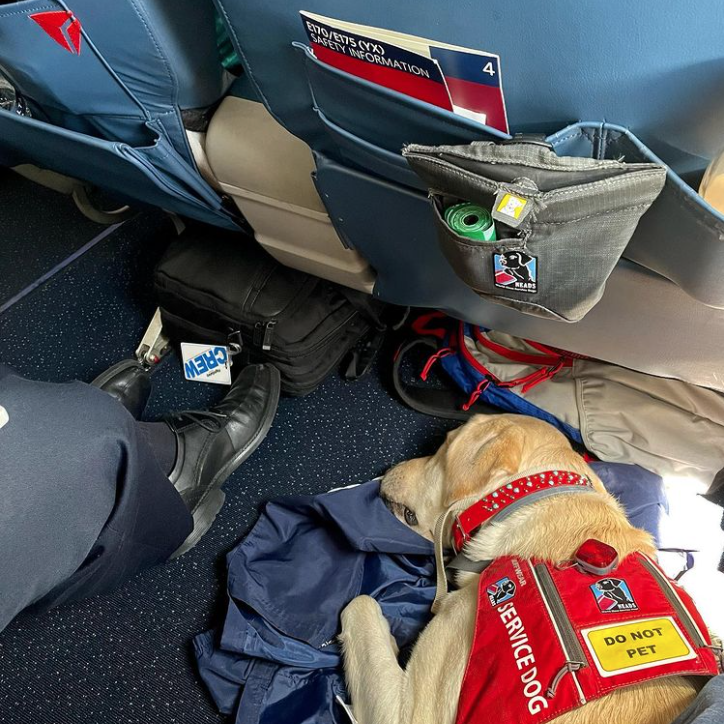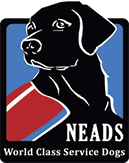Important Information for Flying with a NEADS Service Dog
by Erin Wylie, Manager of Training
Heads up if you’re considering any travel that includes flying. Several NEADS clients have recently encountered difficulties at Logan Airport, specifically with JetBlue, and we want to be sure you have some important information before you fly.
In addition to following the airline’s instructions for filling out forms, providing documentation, and arriving early at the airport, we are recommending that you bring a copy of your completed US Department of Transportation Service Animal Air Transportation form that each airline will ask you to submit 48 hours prior to your flight.
JetBlue in particular is asking passengers with Service Dogs to describe a task that the dog does. They are looking not only for the specific task, but for how the dog knows to do the task (typically what do you say or do). Here are some task examples that you can use when flying JetBlue or any other airline.
Service Dogs
- RETRIEVE – when I give my dog a verbal command, he will pick things up and bring them to me.
- SPEAK FOR HELP – if I fall, I can give my dog a verbal command and he will bark to alert someone I need help.
- ACCESSIBLE DOOR BUTTONS – when I give my dog a verbal command, he will use his paw to hit the automatic accessible door button to open the door for me.
- ELEVATOR BUTTONS – when I give my dog a verbal command, he will use his nose to push an elevator button for me.
Service Dogs for Hearing
- ALARM CLOCK – when the alarm clock goes off, my dog will jump on the bed and make physical contact with me to wake me up.
- DOORBELL/PHONE/SMOKE DETECTOR – when the phone rings (smoke detector goes off/doorbell rings), my dog will run to the phone, back to me and make physical contact, and then run back to the phone.
- NAME CALL – when someone calls my name, my dog responds by turning their body towards the person calling my name.
Service Dog for a Child
- MY LAP ON FLOOR – when I or my child gives a verbal command, the dog will rest its body on the child’s legs while they are sitting on the floor to provide deep sensory/calming pressure.
- VISIT – when I or my child gives a verbal command, the dog will rest its chin on the child’s leg to give the sensation of pressure, which can help with sensory integration.
TAD
- VISIT – when I give a verbal command, my dog will rest their chin on my leg to redirect my focus from the environment to my dog.
- TURN/DOWN STAY – when I give a verbal command, my dog will turn to face behind me and lie down to make me aware if someone comes up behind me.
- TAD clients can potentially describe any of the Service Dogs tasks as well
Assistance Dogs
If you are a client who has an Assistance Dog, it is our understanding at this time that you will not be able to fly with your dog for work purposes like in the past. This may change over time, but as of now, the airlines are so strict that we believe you will be unable to fly with your Assistance Dog for work-related reasons.

